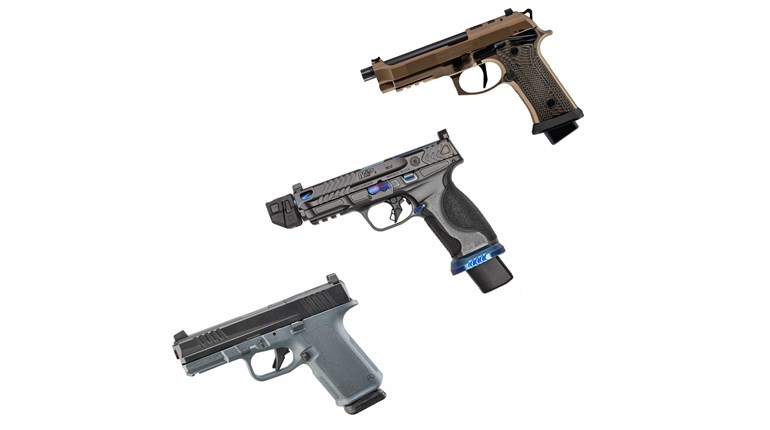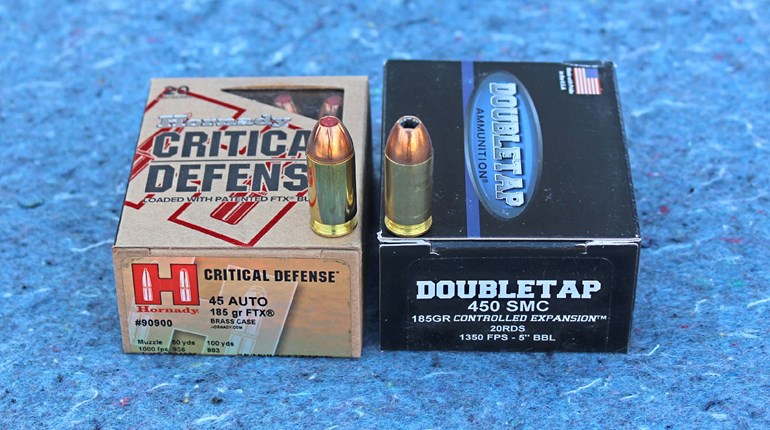
It still looks like an automotive mechanic's lubricating tool, and it is no small quirk of irony the M3 Grease Gun was developed and manufactured by General Motors.
When the Japanese bombed Pearl Harbor on Dec. 7, 1941, catapulting the United States into World War II, the Thompson submachine gun was suddenly thrust front and center and became a much-coveted weapon of our fighting forces. But the wartime Thompson Models 1928, 1928A1 and the subsequent Thompson M1 all had the same drawbacks: they were heavy and expensive to produce.
Even before Japanese Zeros started dropping bombs, the U.S. Army Ordnance Board had been searching for an alternative to the Thompson—something cheaper, lighter and just as effective in battle. Pearl Harbor increased the urgency of this research and development effort. Oddly enough, it was two pre-existing submachine guns—one from an ally and the other from an enemy—that provided inspiration for the M3. England's Sten and Germany's MP40 Schmeisser were both made from stamped-metal parts, featured blowback actions and fired from an open bolt. Both guns were not only effective, but also inexpensive and easy to produce.

Based in part upon the Sten and MP40 concepts, General Motors' chief engineer Frederick Sampson and GM Inland Division's weapons designer George Hyde presented concepts in November 1942. By December, their prototype—initially known as the T20—was approved.
The test guns had fired more than 5,000 rounds with just two malfunctions. Responsibility for production fell to GM's Guide Lamp Division and tooling immediately got underway for what became the M3 submachine gun.
Like the Sten and Schmeisser, the M3 was an air-cooled, blowback-operated, magazine-fed shoulder weapon. It fired from an open bolt with a fixed firing pin, and—with the exception of the machined barrel, bolt and internal firing mechanism—was made of stamped-metal parts, with the two halves of a cylindrical receiver spot-welded to hold it together. The fixed sights were also stamped metal. A wire stock could collapse into the receiver, enabling the M3 to be held like a pistol and hip-fired. The 8-inch barrel assembly looked like a plumber's helper, with a threaded dome on the breech end that served to screw the barrel into the receiver.
The M3 was chambered in .45 ACP, but a 9 mm version was also produced, primarily for European allies. A 30-round, double-stack detachable magazine also served as the front handguard. When the last shot was fired, the bolt closed on an empty chamber. The bolt then had to be manually cocked and locked back via an awkward cranking device, which was affixed to the receiver, before a new magazine could be inserted. Pulling the trigger released the bolt and fired the gun.

One of the Grease Gun's most interesting features (or lack thereof) was the absence of a safety. To render the gun inert, its stamped-metal ejection-port flap was closed, whereupon a flange on its underside essentially jammed the bolt in the open position. Thus, the bolt couldn't begin its forward travel to pick up a cartridge and fire. Unless this flap was shut once a loaded magazine clicked into place and the trigger pulled, the M3 fired.
In-the-field reaction to the M3 was mixed. Compared to the rock-solid feel of the walnut and machined steel of the Thompson, the sheet-metal M3 felt flimsy, and a retractable bolt-cocking crank prone to breakage didn't help. In addition, when compared with the Thompson M1's reduced 650 rounds-per-minute rate of fire, the M3's cyclic rate of 450 rounds per minute felt absolutely sluggish. Considering the fact it could only fire in full-automatic mode, however, this made it easier to squeeze off single shots. But squeeze is the operative word, for the trigger pull varied between 4.5 and 7 pounds, and while the former was manageable, the latter didn't do much for shot placement.
Of course, the M3 had a few good things going for it. For one, it was chambered for .45 ACP, a proven man-stopper and a cartridge that made the gun logistically compatible with the 1911A1 and the Thompson. Plus, the M3 only weighed 7.5 pounds compared to the Thompson's 13-pound heft. And finally—the impetus for the M3's existence—it only cost $20 to produce, compared to the Thompson M1's reduced wartime price of $45.
By December 1944—exactly two years after the M3's introduction—a number of the complaints were finally addressed. The cantankerous cocking handle was eliminated and in its place, an enlarged ejection port with a bolt indentation permitted the bolt to be cocked with finger pressure alone. In addition, the wire stock was altered to incorporate a magazine-loading tool, barrel removal was simplified and an oiler—formerly located on the cocking crank—was placed inside the hollowed-out pistol grip. These and other improvements resulted in the M3A1, with most new parts interchangeable with the original so upgrades could easily be made by armorers.
My time with Uncle Sam came well after the heyday of the Grease Gun, but during Officer Candidate School at Fort Lewis, WA, I got a chance to fire an M3A1. I recall my drill instructor was less than complimentary toward it, but I found it an enjoyable gun to shoot, with minimal recoil, a fair amount of controllability and a healthy "rat-a-tat-tat." I distinctly remember that the shell casings tumbling out of the ejection port—seemingly in slow motion—reminded me of paratroopers being launched into the air out of an open hatch, a comment that caused my DI to shout, "Drop down and give me 30!"
The M3 was initially designed as a cheap, throwaway weapon, yet it ended up staying around for numerous post-World War II conflicts, including the Korean War, when Ithaca was contracted to produce additional M3A1s. In various capacities, the gun remained in service right up through Vietnam and even saw use in Operation Desert Storm with drivers in an engineering battalion. In all, approximately 679,200 M3s were produced. At roughly half the weight and cost of its arch (albeit friendly) rival, the Thompson, the little Grease Gun certainly had staying power.




































